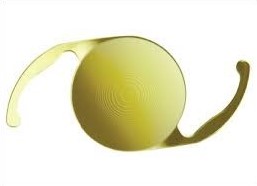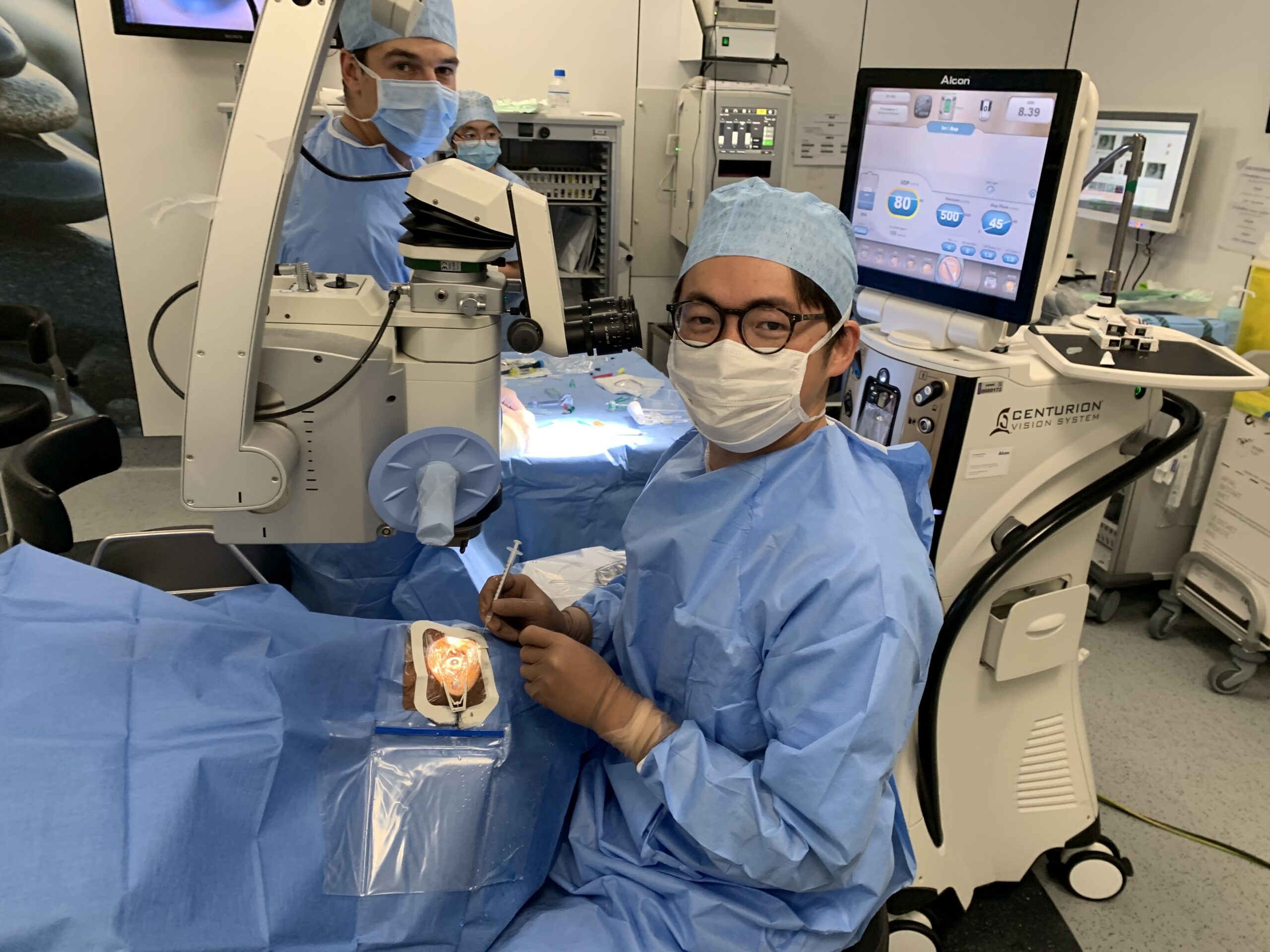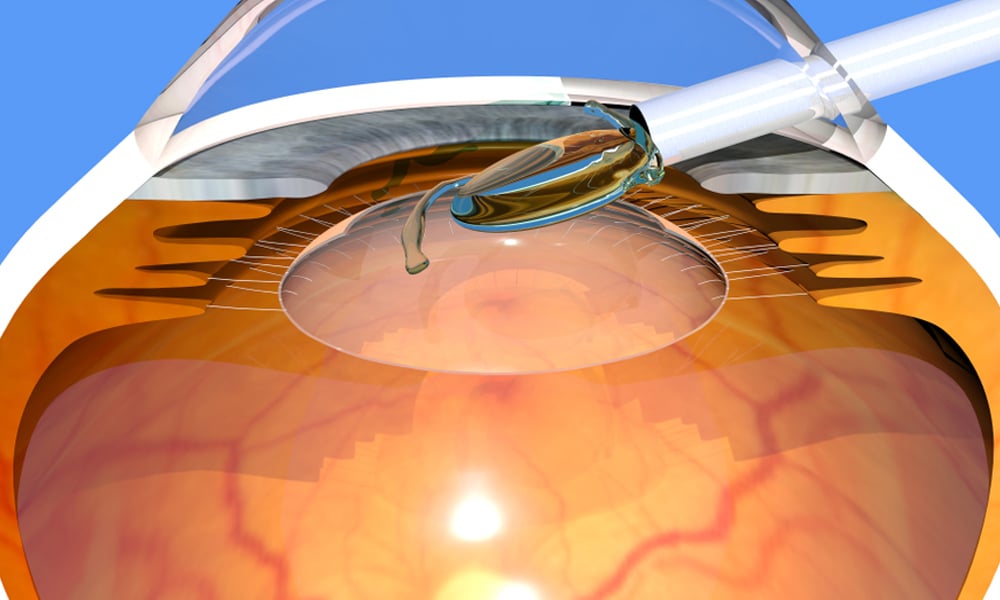Refractive lens exchange
Lens surgery, whether in the context of refractive surgery of the clear lens or cataract surgery, is systematically accompanied, with some exceptions, by the placement of an intraocular implant intended to replace your lens. This implant carries optical power, just like glasses or pre-corneal lenses.


Monofocal implants
Implant calculations performed prior to surgery usually improve or compensate for myopia or hyperopia. The classic implants are the monofaux implants, that is to say they make it possible to compensate for myopia or preoperative hyperopia of the patient. Patients usually see well without glasses from a distance, but should wear corrective lenses for presbyopia and possibly residual astigmatism. Monofocal implants are supported in Belgium by INAMI social security as part of cataract surgery.
However, there are also more sophisticated implants, correcting other visual defects, such as astigmatism or presbyopia.
Toric implants
Toric implants make it possible to compensate for the astigmatism linked to the cornea, that is to say its anomalies in curvature responsible for distortions of the retinal image at all distances. The correction by the implant of such a visual defect makes it possible to improve vision without optical correction associated with a given distance, thus making it possible to avoid wearing corrective lenses, by far in most cases. These implants require positioning along a very precise axis, evaluated during the preoperative examination. However, such an implant may not be placed in the event of certain operational incidents.
The correction of astigmatism by the implant may be incomplete, possible complementary gestures can be proposed to improve it: surgical repositioning of the implant or refractive corneal surgery. Toric implants in Belgium are supported by INAMI when the preoperative astigmatism diopter is above 2 cylindrical diopters in the corneal plane.
Multifocal and multifocal toric implants
The standard implant placed during lens surgery is said to be “monofocal”, that is to say allowing focusing at a predetermined distance: far, intermediate or near. Additional correction is therefore usually necessary with monofocal implants. So-called “multifocal” implants can therefore be offered to you, in order to reduce or eliminate the wearing of corrective lenses from both near and far. The optical characteristics of these implants may be slightly different depending on the model.

Benefits:
– With current multifocal implants, more than 90% of patients do not wear glasses for most of their daily life.
– These implants also allow a stable optical correction over time, and to correct most of the associated visual defects and in particular astigmatism for the multifocal toric implant. Their optical performance is high, which induces high satisfaction indices.
– Visual performance improves over time, and results are optimized by the operation of the second eye.
Possible disadvantages:
– Not all patients can benefit from such implants, since many ocular pathologies associated with cataracts contraindicate their use; your ophthalmologist must therefore carry out a detailed assessment aimed at eliminating any contraindications,
– The implant calculation (or biometric calculation) used to determine its power must be extremely precise to avoid any residual refractive defect; however, a significant refractive defect limiting the expected visual result may benefit from a secondary surgical adjustment. Non-exhaustively, the following may be offered: laser surgery of the cornea, replacement of the implant placed or the placement of a second implant in addition. Your ophthalmologist is at your disposal to explain the terms to you.
– In the event of an operational incident (extensive rupture of the posterior capsule), such an implant may not be placed.
– Exceptionally, the brain cannot get used to the new vision produced by these implants and the only possible solution is then to remove it to exchange it for a standard “monofocal” implant.
– Certain professions or certain activities may contraindicate the multifocal implant.
– The halos, perceptible in the evening around light sources (car headlights,
street lights…), initially present in most cases, generally fade with the
time.
– In a very small percentage of cases, these halos can make driving at night
difficult.
– Glare phenomena are also reported with an increase in the
sensitivity to light, this phenomenon diminishing after a few months, and easily compensated by
wearing tinted glasses.
– Visual tiredness is sometimes felt, linked to a moderate reduction in sensitivity
to contrasts. More lighting for reading activities is usually sufficient,
more rarely extra glasses. Occasional glasses may also be offered during
driving at night or for the computer.
Multifocal and multifocal toric implants generally justify an additional cost and in Belgium, they are not reimbursed by INAMI.
In conclusion, these sophisticated implants require specific means of investigation before
their fitting, to allow great independence vis-à-vis the wearing of corrective lenses, with a
improved quality of life; they can be used in first intention, but also during a
reoperation on a monofocal implant previously placed. The implants described in this document
represent an option and are not mandatory; surgery with monofocal implants gives
rule of very good results, at the cost of an optical correction by glasses more often necessary.
CONTACT
You want to make an appointment? You can either call one of the 5 sites via the button below, or make an appointment directly online in the Contact section, or send me a message in the Contact section
The ophthalmology secretaries and Dr. Qin’s team are available to answer all your questions and requests for information in order to make the best choice. I will be pleased to welcome you at one of the 5 sites.
Discover the 5 sites

